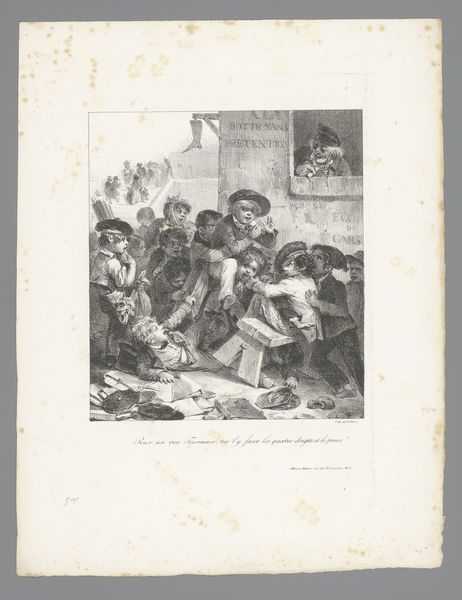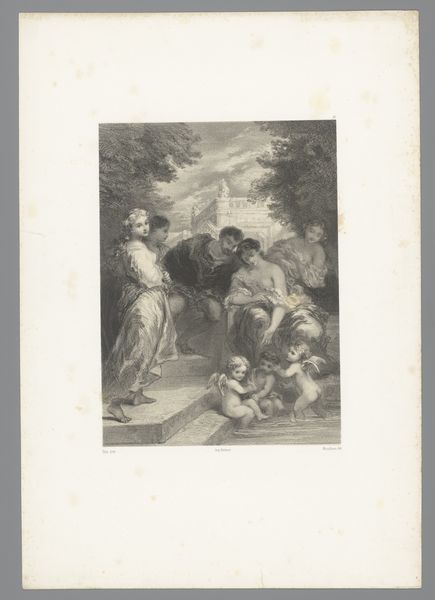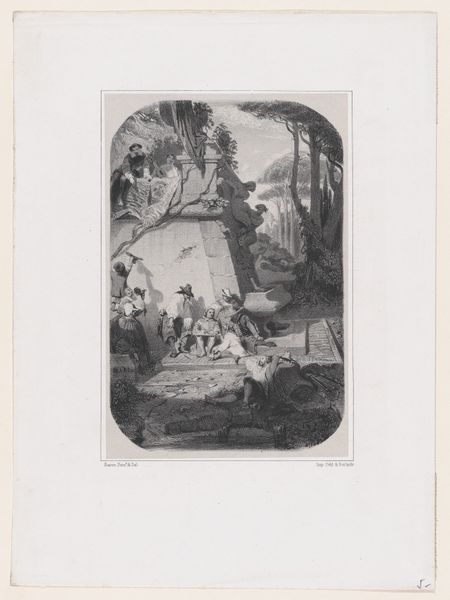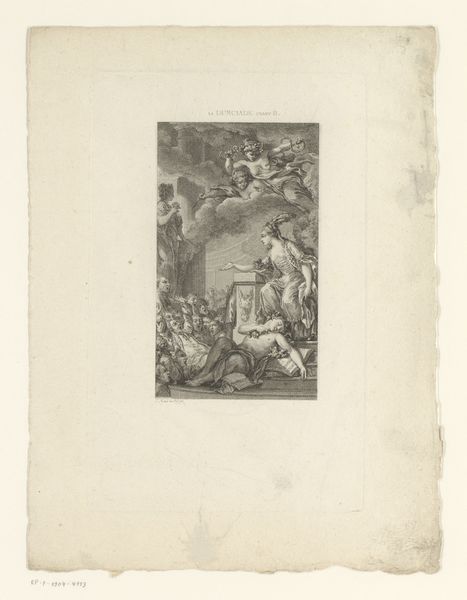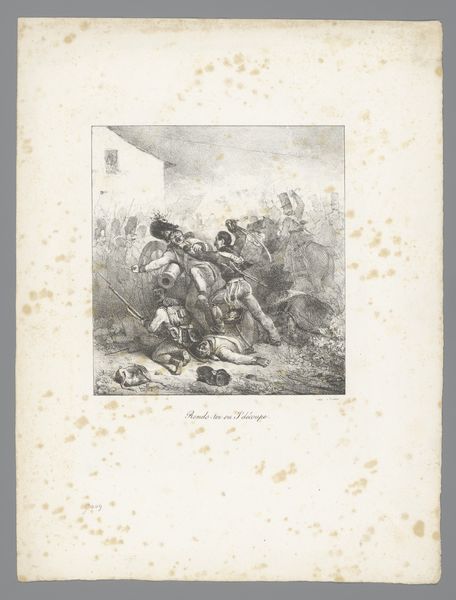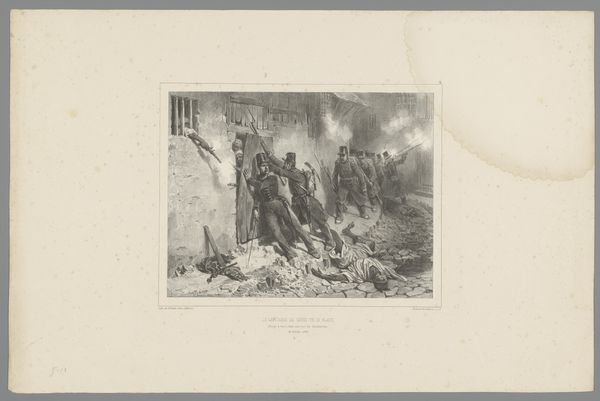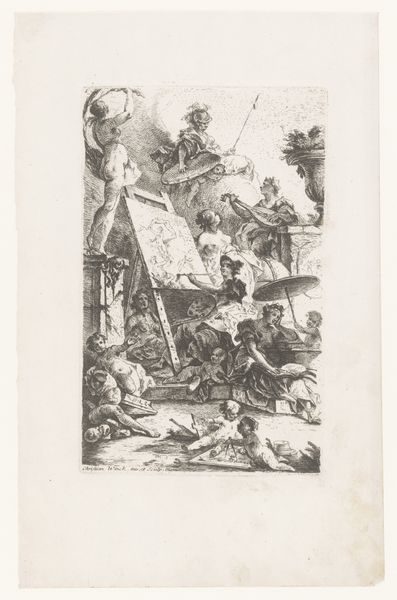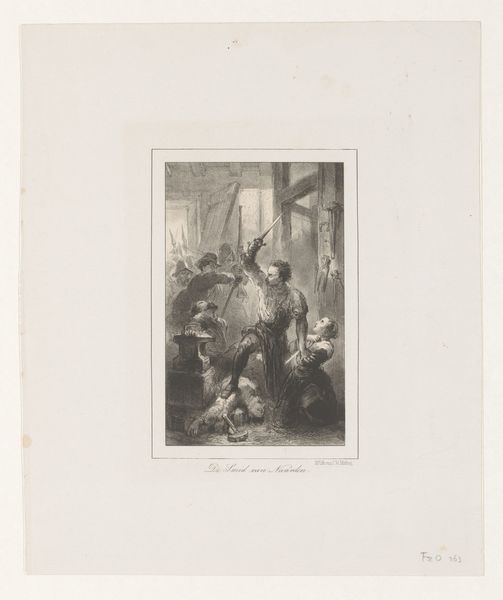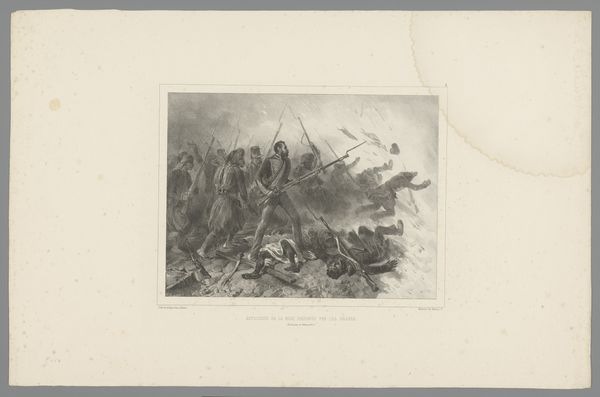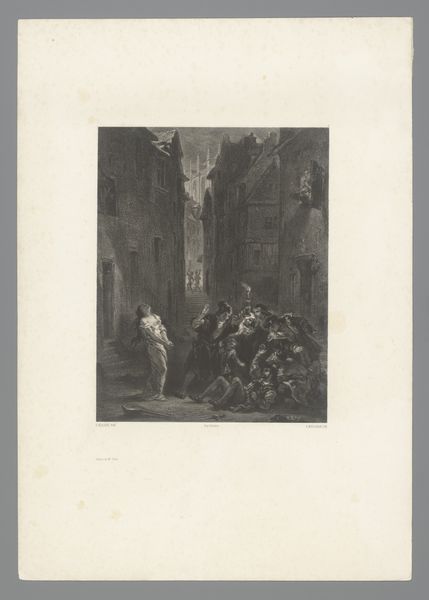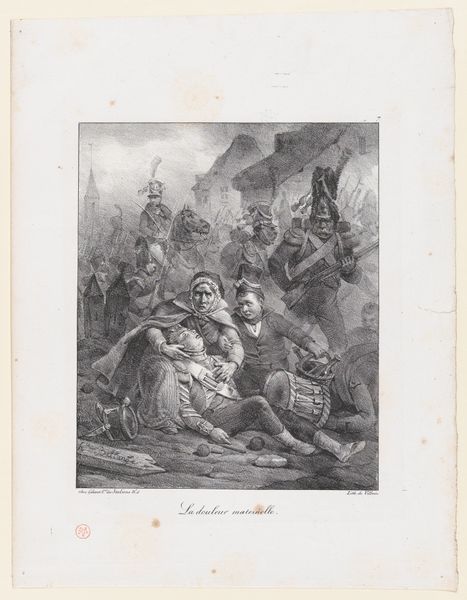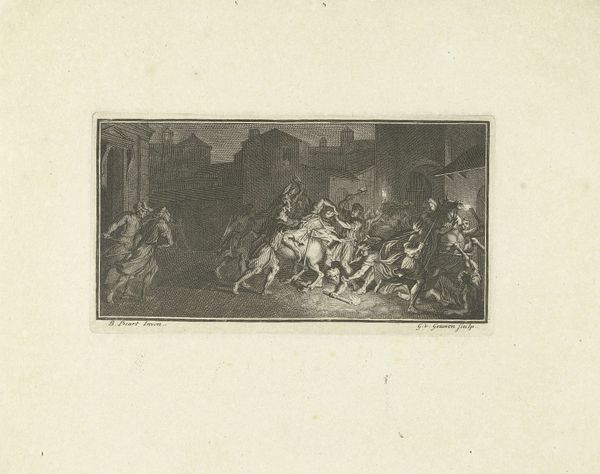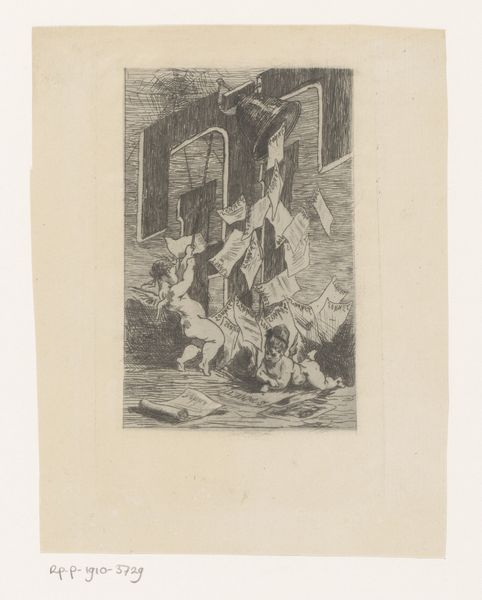
drawing, print, paper, ink, engraving
#
drawing
#
narrative-art
# print
#
landscape
#
figuration
#
paper
#
ink
#
romanticism
#
cityscape
#
history-painting
#
engraving
#
realism
Dimensions: height 276 mm, width 178 mm
Copyright: Rijks Museum: Open Domain
Editor: This is "Gevecht tussen soldaten en burgers," or "Fight between Soldiers and Citizens" by Paulus Lauters, from 1835. It's an engraving made with ink on paper. The chaotic composition really jumps out. I'm immediately drawn to the intense central clash. What do you see in this piece from a formalist perspective? Curator: I notice first how Lauters uses line and value to create depth. Observe how the darker, more defined lines in the foreground bring the action forward, contrasting with the softer, less distinct lines suggesting distance. The spatial relationship between the foreground, middle ground, and background functions to flatten perspectival depth, highlighting the interplay between these areas instead. Editor: That's interesting. So you're focusing less on what the image depicts, and more on how Lauters structures it? Curator: Precisely. Consider how the dense clustering of figures at the center gives way to a dispersal outwards and upwards, drawing our eyes toward the architectural structures, though not in a conventional recession of space. Note also how the repetition of similar shapes – the figures themselves, the buildings, the weapons – create a formal rhythm. How does this rhythmic quality affect your interpretation? Editor: It creates a sense of unrest and continuous action. It seems to amplify the chaos of the scene, almost like a visual echo. The architecture is both backdrop and participant here! Curator: Yes, the integration is masterful. It’s a study in the articulation of space via formal elements and their echoes. Note how the lines of the buildings angle, directing our view to strategic action areas; their vertical posture adds an ominous presence. It amplifies and complicates, doesn’t it? Editor: I agree completely. The architectural and human forms mirror each other creating both depth and intensity of action in this piece! Curator: Indeed, a fine conclusion highlighting the dynamic use of space and formal relationships within the composition. I hadn’t considered it that way, and you put it succinctly.
Comments
No comments
Be the first to comment and join the conversation on the ultimate creative platform.
